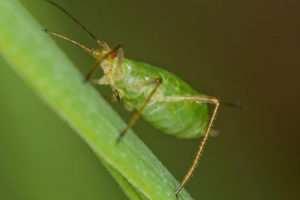Aphids use fluorescence to avoid dangerous bacteria
Posted On: Tuesday, March 19, 2019

Do organisms use fluorescence to help them through their daily lives? This is a question that is often asked when fluorescence is observed in nature. These observations are often accompanied by speculation and suggestion, but without the work needed to make a strong scientific case. We wrote about this in an article on this web site.
A recent paper in Current Biology by Hendry et al. (full citation below) is a welcome exception. The authors demonstrate that pea aphids (Acyrthosiphon pisum) avoid feeding on leaves when virulent P. syringae bacteria are present. This avoidance behavior depends on visual detection of fluorescence from the bacterial compound pyoverdine in the presence of ultraviolet light.
All the factors you should see in a scientific publication on visual function of fluorescence are included in the paper:
- Photographic documentation of the fluorescence
- Measurement of the spectral properties of the fluorescence
- Measurement of the spectral sensitivity of the aphid visual system
- Controlled behavioral experiments with and without ultraviolet light present
It is this last factor, a good documentation of the behavioral response, that is so often missing.
Reference
Pea aphid image by Andy Murray, licensed under the Creative Commons Attribution-Share Alike 2.0 Generic license. No changes were made to the image.
